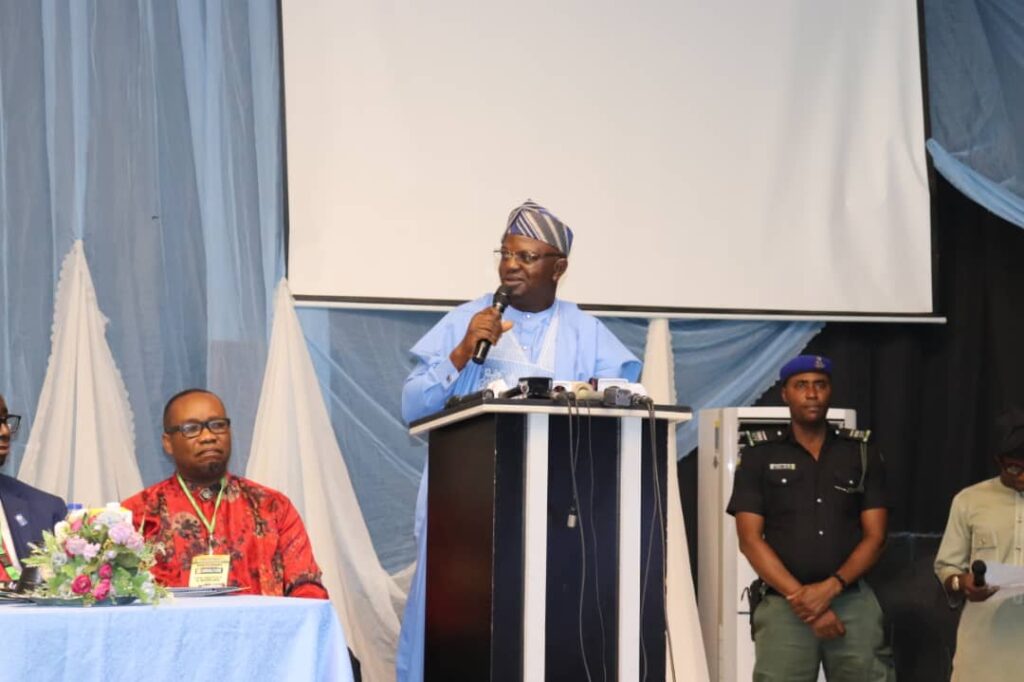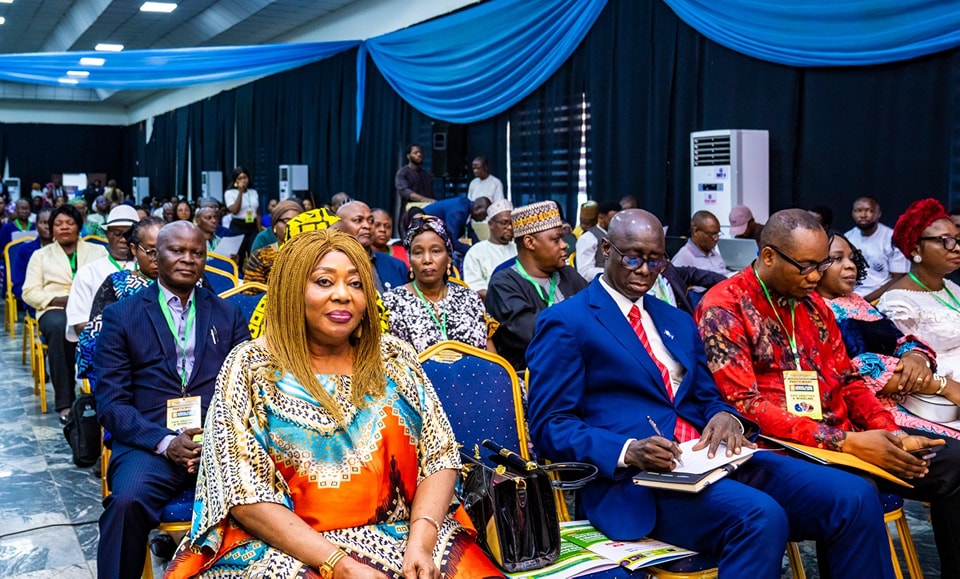

In his keynote address, Prof. Utsev revealed significant predictions, which indicated that 148 Local Government Areas (LGAs) in 31 States of the Federation are at risk of high flood, while 249 LGAs in 35 states and the Federal Capital Territory (FCT) are within moderate flood risk areas. These States include Adamawa, Akwa-Ibom, Anambra, Bauchi, Bayelsa, Benue, Borno, Cross-River, Delta, Ebonyi, Edo, Imo, Jigawa, Kaduna, Kano, Katsina, Kebbi, Kogi, Kwara, Lagos, Nasarawa, Niger, Ogun, Ondo, Osun, Oyo, Plateau, Rivers, Sokoto, Taraba, and Yobe.
The Minister also highlighted that high flood risk are to be expected in the areas across three distinct seasons: April, May, and June (AMJ); July, August, and September (JAS); and October and November (ON). He emphasized the alignment of the AFO with the Presidential Agenda on Food Security, aimed at enhancing agriculture resilience among vulnerable communities by reducing exposure to climate-related disasters and leveraging the positive effects of flooding for sustainable growth and economic development.
Prof. Utsev further disclosed the inauguration of the National Economic Council Adhoc Committee on Flood Mitigation, Adaptation, Preparedness, and Response under the administration of President Bola Ahmed Tinubu, GCFR. This Committee is charged to develop a roadmap to enhance Nigeria’s capabilities in flood mitigation, preparedness, adaptation, and response, informed by periodic updates from the Nigeria Hydrological Services Agency (NIHSA) and relevant MDAs in the disaster risk reduction sector.

In his address, the Honourable Minister of State for Water Resources and Sanitation, Rt. Honourable Bello Muhammad Goronyo Esq, stressed the need for policymakers, planners, farmers, stakeholders, and the public to undertake mitigation measures to enhance safety and reduce potential damages to floods. He advocated for increased awareness and sensitization campaigns to improve flood preparedness and management, particularly in high-risk zones.
Hon. Goronyo also stressed the importance of diversifying AFO publications to include drought and desertification, acknowledging their contribution to climate change impact, especially in the Savannah and Sahelian regions of Nigeria.
In a goodwill message, the Director-General/CEO of the Nigeria Meteorological Agency (NiMet) and Permanent Representative of Nigeria World Meteorological Organisation (WMO), Prof. Charles Anosike, reaffirmed NiMet’s commitment to collaborating with NIHSA, highlighting the significance of their partnership in improving disaster risk preparedness against flooding events.
The event featured a short documentary on flood mitigation and management, as well as cultural dance to reflect the theme of the 2024 AFO.
The highlights of the occasion was the official unveiling of the 2024 AFO by the Honourable Minister of Water Resources and Sanitation, Engr. Prof. Joseph Terlumun Utsev, FNSE, FNIWE, FNICE, FIA, alongside the Honourable Minister of State for Water Resources and Sanitation, Rt. Hon. Bello Muhammad Goronyo Esq.
Some of the dignitaries at the event include the Honourable Minister of State for Agriculture & Food Security, Hon. Abubakar Kyari, House Committee Chairman on Hydrological Development/N-HYPADECC, Rt. Hon. Paschal A Agbodike
Others are the representatives of the Honourable Minister of Environment, Malam Balarabe Abbas Lawal, Director General National Emergency Managment Agency (NEMA) Mrs Zubaida Umar, disaster risk managers, academia, scholars, directors from several MDAs, environmentalists, stakeholders from government and non-government organizations, water users, and representatives from the private sector.


In his closing remarks, the Director-General of NIHSA expressed gratitude to the Honourable Ministers for their support in making the public presentation of the 2024 Annual Flood Outlook a huge success. He also thanked stakeholders for their participation, highlighting the vital role of AFO publications in addressing flood disasters in the country.
Flooding remains a significant natural disaster in Nigeria, with far-reaching impacts across various sectors. Mitigating these risks requires a concerted effort from all stakeholders, including disaster risk managers, policymakers, and the public, to promote preparedness and implement effective flood control and mitigation measures.